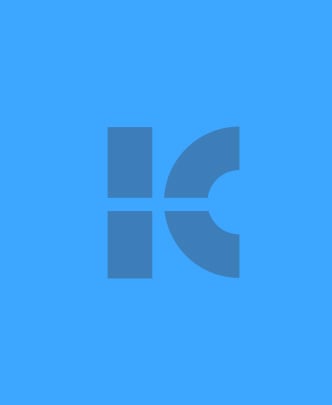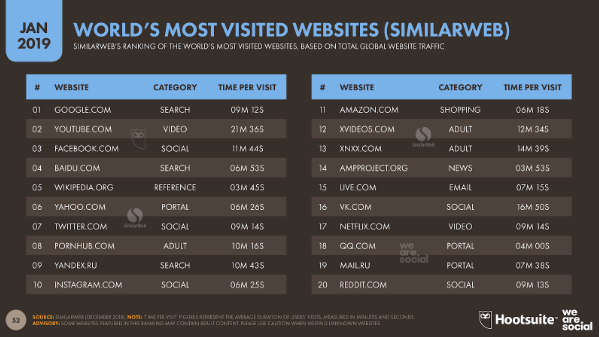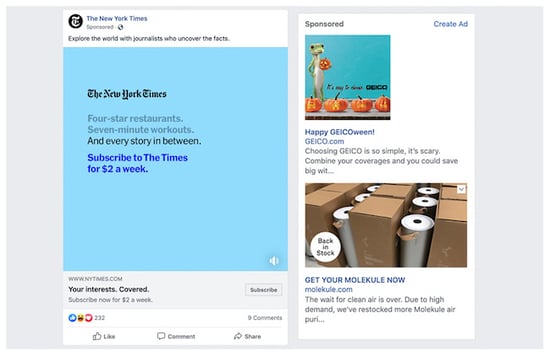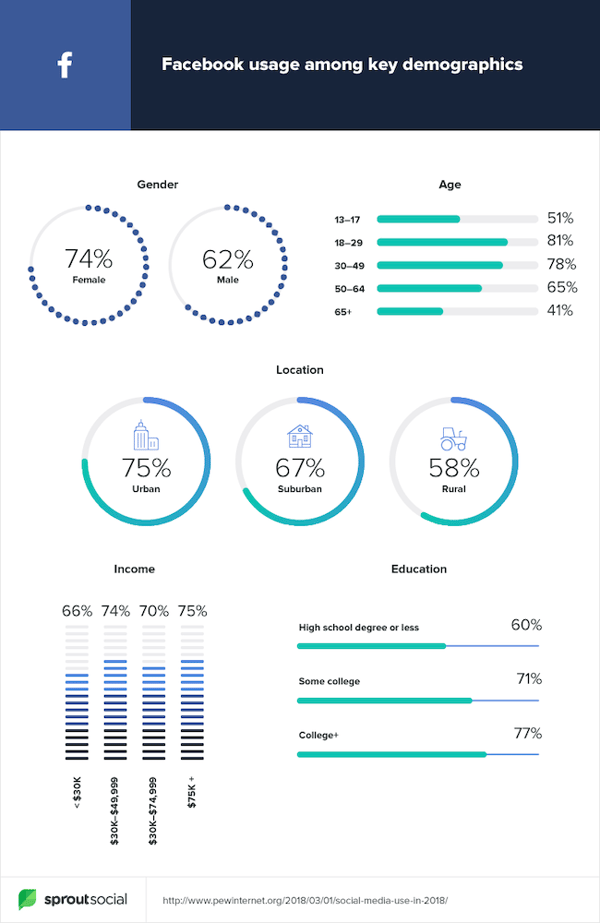
Google Ads versus Facebook Advertising: When to Use Both

One of the great benefits of inbound marketing is how much more cost effective it is than traditional advertising. Earning your audience’s attention by providing what they need when they need it has a larger cost benefit than paying for large platforms like billboards or TV commercials where you’re targeting an audience that you hope includes some of your intended demographic.
But as inbound marketing has grown more popular, most industries have been flooded with content. Your blog posts, eBooks and videos may be packed full of crucial information your audience needs, but they won’t get any benefit from your content if they can’t find it to begin with. You need a way to get your content where your audience already is.
Today, that means Google and Facebook. Both platforms offer advertising options that can play a valuable role in an inbound marketing strategy, but they’re each different. To figure out how to best incorporate them into your strategy, you need to understand how Google Ads and Facebook advertising stack up.
Google Ads and Facebook Advertising: The Rundown
Google Ads and Facebook Advertising aren’t the only PPC games in town, but they’re the biggest ones. Google and Facebook are both so ubiquitous that, no matter who your target audience is, they’re probably on both. That’s what makes them the most obvious options for companies doing online advertising.
Google Ads 101
Google Ads (formerly called Google AdWords) is Google’s advertising platform. As you’d expect, Google Ads powers all the ads you see show up on the search engine results page (SERP) of Google.

With Google’s search engine being the world’s most visited website, that alone allows you to reach a huge audience.
 But beyond that, it’s also behind the ads you see on other Google properties like Gmail and YouTube (the world’s second-most visited website). And through the Google Display Network, it powers a large portion of the ads you see on other sites across the web.
But beyond that, it’s also behind the ads you see on other Google properties like Gmail and YouTube (the world’s second-most visited website). And through the Google Display Network, it powers a large portion of the ads you see on other sites across the web.



Google Ads uses a bidding system. Where and how often your ads show up is based on how much you bid and how competitive the keywords and placements you’re targeting are. They also offer a variety of ad types and you have a lot of control over what information is included in each ad.
5 Benefits to Using Google Ads
Google Ads has a good case for earning those advertising dollars. It’s particularly strong in these five areas:
Huge Reach
Between Google’s search engine, the other popular properties it owns, and the vast breadth of the Google display network, Google Ads reaches over 90% of internet users. As popular as social media is, none of the social channels have that kind of reach.
Relevance
Every time you do a search in Google, you’re looking for something specific. The search terms you use clearly communicate to Google what you want to find, and the search engine does its best to deliver content that answers your needs. For advertisers, that relevance is extremely valuable. Your product or content isn’t showing up for consumers when they’re in the middle of doing something else, it shows up right when they’re looking for what you have to offer. If you use Google Ads’ targeting options effectively, you won’t be interrupting busy people, you’ll be helping them.
Retargeting
Speaking of busy people, our lives are full of competing interests and responsibilities. It’s easy enough to visit a website once and never think of it again. That’s where retargeting comes in. Google has a unique combination of data on what websites people visit and the ability to serve up ads across thousands of websites. That means they can offer advertisers the ability to retarget past website visitors with relevant ads as they browse other websites. In other words, you can set it up so someone who checks out your blog post about improving collaboration across departments will see an ad for your project management software when reading their morning news. You stay top of mind for when they’re ready to take the next step.
Great for Testing
Effective marketing strategies are based on insights from data. Every campaign you launch with Google Ads produces data on what your audience responds to. The ads you run with Google are therefore a rich opportunity to test what works for your target audience. You can do A/B testing to find out which types of headlines work best or what CTAs (calls-to-action) make your audience most likely to click. What you learn in Google Ads can be used to make your marketing campaigns stronger in other areas as well. You can refine your SEO strategy based on which keywords show the best ROI in Google Ads, update the CTAs on your website based on which ones drive the most clicks and update your blog headlines based on what your PPC data shows works for your audience.
Significant ROI
Marketers often face pressure to show the return on investment (ROI) your activities provide. For some types of marketing, showing solid proof of value is a challenge. Not so for Google Ads. Advertisers with Google Ads get a return of $2 for every $1 they spend on average, according to Google’s estimates. And each business can use the analytics provided by Google Ads to make those calculations for their own accounts.
Facebook Advertising 101
Facebook’s ad platform controls all the ads you see on Facebook. If you want to use Facebook in your marketing strategy, Facebook advertising is pretty much required. The company’s algorithm is set to prioritize posts from family, friends and the groups people are in — not brands. So to get your content into their feed, you have to pay.
But if you recall the graphic of most visited websites shared above, Facebook is third on the list. A lot of people spend a lot of time on the site, so it can be a good way to reach more of your audience.
The platform offers a few different ad types. Ads generally show up along the side of the feed, or in the feed itself, always with a “Sponsored” label. Those in the feed resemble other posts, right down to people being able to comment and react to them. Facebook ads can include images, text, videos, offers or a carousel or slideshow with multiple images. Like Google, Facebook ads use a bidding model. You can set a maximum daily spend and choose whether you pay based on clicks or impressions.
Facebook ads can include images, text, videos, offers or a carousel or slideshow with multiple images. Like Google, Facebook ads use a bidding model. You can set a maximum daily spend and choose whether you pay based on clicks or impressions.
4 Benefits of Facebook Advertising
While Facebook isn’t as ubiquitous as Google, it’s nonetheless a strong contender for a place in your inbound marketing strategy. These are a few of the top reasons why:
Significant Reach
Facebook has over 2.5 billion monthly active users. And notably, over 1.66 billion of those log into the platform every day. In fact, most people aren’t just logging in once and leaving the site — they spend an average of 38 minutes a day on there.
 And the site is popular across demographic categories. No matter who your target audience is, there’s a good chance they’re spending time on the platform.
And the site is popular across demographic categories. No matter who your target audience is, there’s a good chance they’re spending time on the platform.
 Detailed Targeting Options
Detailed Targeting Options
Google offers some pretty good targeting options for relevance, but Facebook gets even more detailed in the demographic targeting you can do. Beyond the obvious options like gender, age and location, they have enough data on users to offer targeting for specific categories like:
- Relationship status
- Parental status
- Life events (e.g. anniversary, birthday, new job)
- Politics
- Job type
- Industry
- Employer
- Interests and hobbies
- Purchasing behaviors
That level of targeting increases your chances of reaching the exact right person at a time when your offering is relevant to their needs.
Retargeting
Like Google, Facebook also offers retargeting options. You can serve up personalized ads to people that have already visited your website, joined your email list or liked your page and posts.
While most of us are probably used to seeing B2C retargeted ads show up in our Facebook feeds, Facebook retargeting can be more important for B2B brands. When B2B prospects regularly require up to a dozen touchpoints before making a purchasing decision, it pays to give them reminders of your brand and expertise in the places they hang out most.
Low Cost
Because they both work on a bidding model, what you’ll spend on Facebook and Google campaigns depends on a lot of different factors. But generally speaking, Facebook tends to cost less. According to Fit Small Business the average cost-per-click (CPC) on Facebook is $1.72 to Google’s $2.69.
Google Ads versus Facebook: Which is Right for Me?
Now that you know the basics of each, how do you decide how they should fit into your strategy? Chances are, you‘ll benefit from using both. But when and how you use them will depend on a few main questions.
- Who’s your audience? Every product promotion or piece of content you create is meant for a specific target audience. And the great thing about both Google Ads and Facebook advertising is that you can carefully target who will see the ads you create. Do audience research to learn how often your customers and prospects use each of the platforms, and how they use them. Those insights will help you determine which of the two should command more of your budget.
- What are your campaign goals? The biggest difference between the two platforms is user intent. People go to Google when they’re looking for something specific. People on Facebook are more likely to be scrolling, rather than seeking out a particular piece of information. That means where a promotion or piece of content falls in the buyer’s journey is an important consideration. Google is the better option for any campaigns focused on more direct action, like making a sale or getting someone to sign up for a free trial. And both platforms are good for informational campaigns. Promote content that answers your user’s questions on Google, targeting relevant keywords. And share educational or entertaining content on Facebook that your audience will find interesting enough to click on when they see it in their feed.
- What does your data tell you? With any new paid media campaign, you have to do some guessing at what your audience will care about and respond to. But once you’ve done a few campaigns within Google Ads and Facebook, you’ll start to have data on what works. Pay attention to which platform is delivering a better ROI, and which campaigns in each successfully achieve the specific goals you set out for them. You’ll probably end up shifting your strategy and budget based on what you learn as you go.
Ad Placement Depends on Your Audience
Both Facebook advertising and Google Ads can be valuable resources in getting your content in front of more people. Most businesses will benefit from at least giving both a try. But every business will need to figure out the right mix of the two for themselves, based on your audience, goals and the kind of results you see once you get started.



